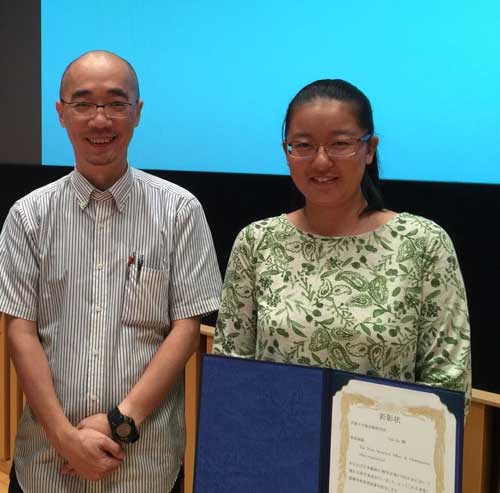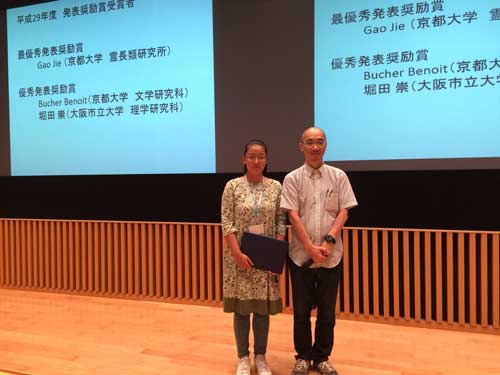English
行動関連5学会・研究会合同大会「行動2017」において
大学院修士2年ガオ・ジエさんが、日本動物心理学会最優秀発表賞を受賞
2017年8月30日から9月1日に東京大学駒場キャンパスで開催された行動関連5学会・研究会合同大会「行動2017」において大学院修士2年(思考言語、リーディング大学履修生)のガオ・ジエさんが、日本動物心理学会最優秀発表賞を受賞しました。


Gao Jie (Graduate student of the Language and Intelligence Section, PWS
student) won the best presentation award of the Japanese Society for Animal
Psychology in the "KOUDOU2017". joint annual meeting of the 5
societies held during August 30 to September 1.
The Body Inversion Effect in Chimpanzees (Pan troglodytes)
Jie Gao & Masaki Tomonaga (Primate Research Institute, Kyoto University)
Animals use bodies to explore and interact with the world. Humans’ body
recognition is deteriorated by inversion. This inversion effect suggests
configural body processing. Little is known about this in non-human primates. We
tested seven chimpanzees using upright and inverted stimuli in
matching-to-sample tasks to examine the body inversion effect. Exp. 1 used
chimpanzee bodies and houses. Exp. 2 used intact bodies, bodies with blurred
faces, and faces with blurred bodies. Exp. 3 used intact bodies, bodies without
faces, only faces, and body silhouettes. Exp. 4 used intact bodies and scrambled
bodies. They showed the inversion effect to all intact body conditions,
indicating configural body processing. They also showed the inversion effect to
faces with blurred bodies in Exp. 2 and to silhouettes in Exp. 3, suggesting the
roles of faces and body contours in the inversion effect. No inversion effect
was found in scrambled bodies, suggesting that they know about typical body
structures.







